Silicon Carbide Microstrip Radiation Detectors
Abstract
:1. Introduction
2. Materials and Methods
3. Results
3.1. Electrical Characterization
3.1.1. Capacitance–Voltage Characterization
3.1.2. Statistical Leakage–Current Distribution
3.1.3. Temperature Dependence
3.1.4. Interstrip Resistance Measurements
3.2. X-Ray Spectroscopy
3.2.1. Room Temperature
3.2.2. Dependence of X-Ray Response on Detector Bias
3.2.3. High Statistics and Temperature Dependence
4. Discussion
5. Conclusions
Author Contributions
Funding
Acknowledgments
Conflicts of Interest
References
- Van Heerden, P.J. The Crystal Counter: A new apparatus in nuclear physics for the investigation of β- and γ-rays. Part, I. Physica 1950, 16, 505–516. [Google Scholar] [CrossRef]
- Van Heerden, P.J.; Milatz, J.M.W. The Crystal Counter: A new apparatus in nuclear physics for the investigation of β- and γ-rays. Part II. Physica 1950, 16, 517–527. [Google Scholar] [CrossRef]
- Lerov, C.; Rancoita, P.-G. Principles of Radiation Interaction in Matter and Detection, 2nd ed.; Word Scientific: Singapore, 2009; p. 83. ISBN 978-981-4470-89-6. [Google Scholar]
- Scholze, F.; Rabus, H.; Ulm, G. Mean energy required to produce an electron-hole pair in silicon for photons of energies between 50 and 1500 eV. J. Appl. Phys. 1998, 84, 2926–2939. [Google Scholar] [CrossRef]
- Bertuccio, G.; Casiraghi, R. Study of silicon carbide for X-ray detection and spectroscopy. IEEE Trans. Nucl. Sci. 2003, 50, 175–185. [Google Scholar] [CrossRef]
- Knoll, G.N. Radiation Detection and Measurement, 4th ed.; Wiley: New York, NY, USA, 2010; ISBN 978-0-470-13148-0. [Google Scholar]
- Lutz, G. Semiconductor Radiation Detectors: Device Physics, 2nd printing of the 1st ed.; Springer: Berlin/Heidelberg, Germany, 2007; ISBN 978-3-540-71679-2. [Google Scholar]
- McGregor, D.S.; Hermon, H. Room-temperature compound semiconductor radiation detectors. Nucl. Instrum. Methods Phys. Res. A Accel. Spectrom. Detect. Assoc. Equip. 1997, 395, 101–124. [Google Scholar] [CrossRef]
- Bertuccio, G. Prospect for Energy Resolving X-ray Imaging with Compound Semiconductor Pixel Detectors. Nucl. Instrum. Methods Phys. Res. A Accel. Spectrom. Detect. Assoc. Equip. 2005, 546, 232–241. [Google Scholar] [CrossRef]
- Schlesinger, T.E.; James, R.B. (Eds.) Semiconductor for Room Temperature Nuclear Detectors Applications, Semiconductor and Semimetal Series; 1st ed.; Academic Press: San Diego, CA, USA, 1995; Volume 43, ISBN 9780080571997. [Google Scholar]
- Owens, A.; Bavdaz, M.; Peacock, A.; Poelaert, A. High resolution x-ray spectroscopy using GaAs arrays. J. Appl. Phys. 2001, 90, 5376–5381. [Google Scholar] [CrossRef]
- Abbene, L.; Del Sordo, S.; Caroli, E.; Gerardi, G.; Raso, G.; Caccia, S.; Bertuccio, G. Hard X-ray Response of Pixellated CdZnTe detectors. J. Appl. Phys. 2009, 105, 124508. [Google Scholar] [CrossRef]
- Bertuccio, G.; Pullia, A. Room Temperature X-Ray Spectroscopy with a Silicon Diode Detector and an Ultra Low Noise Preamplifier. IEEE Trans. Nucl. Sci. 1994, 41, 1704–1709. [Google Scholar] [CrossRef]
- Pullia, A.; Bertuccio, G. Resolution Limits of Silicon Detectors and Electronics for Soft X Ray Spectroscopy at non Cryogenic Temperatures. Nucl. Instrum. Methods Phys. Res. A Accel. Spectrom. Detect. Assoc. Equip. 1996, 380, 1–5. [Google Scholar] [CrossRef]
- Bertuccio, G.; Caccia, S.; Casiraghi, R.; Lanzieri, C. Possibility of sub-electron noise with room temperature silicon carbide pixel detectors. IEEE Trans. Nucl. Sci. 2006, 53, 2421–2427. [Google Scholar] [CrossRef]
- Nava, F.; Bertuccio, G.; Cavallini, A.; Vittone, E. Silicon carbide and its use as a radiation detector material. Meas. Sci. Technol. 2008, 19, 102001. [Google Scholar] [CrossRef]
- Kimoto, T.; Cooper, J.A. Fundamentals of Silicon Carbide Technology, 1st ed.; IEEE Press: Piscataway, NJ, USA; John Wiley & Sons: Hoboken, NJ, USA; Singapore Pte. Ltd.: Singapore, 2014; ISBN 978-1-118-31352-7. [Google Scholar]
- Mandal, K.C.; Muzykov, P.G.; Terry, J.R. Highly sensitive x-ray detectors in the low-energy range on n-type 4H-SiC epitaxial layers. Appl. Phys. Lett. 2012, 101, 051111. [Google Scholar] [CrossRef]
- Sadrozinski, H.F.-W. Silicon microstrip detectors in high luminosity application. IEEE Trans. Nucl. Sci. 1998, 45, 295–302. [Google Scholar] [CrossRef]
- Rossi, G.; Morse, J.; Protic, D. Energy and position resolution of germanium microstrip detectors at X-ray energies from 15 to 100 keV. IEEE Trans. Nucl. Sci. 1999, 46, 765–773. [Google Scholar] [CrossRef]
- Dusi, W.; Auricchio, N.; Brigliadori, L.; Cola, A.; Donati, A.; Landini, G.; Mengoni, D.; Perillo, E.; Siffert, P.; Ventura, G. A study of the spectroscopic performance of a CdTe microstrip detector. IEEE Trans. Nucl. Sci. 2003, 50, 1026–1030. [Google Scholar] [CrossRef]
- Kaluza, A.; Ohms, T.; Rente, C.; Engels, R.; Reinartz, R.; Luth, H. Microstrip X-ray detector with a very high dynamic range based on LPE-GaAs. IEEE Trans. Nucl. Sci. 1998, 45, 724–727. [Google Scholar] [CrossRef]
- LPE Epitaxial Technology, S.p.A. Available online: http://www.lpe-epi.com/ (accessed on 21 June 2019).
- Sze, S.M.; Ng, K.K. Physics of Semiconductor Devices, 3rd ed.; John Wiley & Sons Inc.: Hoboken, NJ, USA, 2007; pp. 85–137. ISBN 978-0-471-14323-9. [Google Scholar]
- Schroder, D.K. Semiconductor Material and Device Characterization, 3rd ed.; John Wiley & Sons Inc.: Hoboken, NJ, USA, 2006; p. 691. ISBN 978-0-471-73906-7. [Google Scholar]
- Knoll, L.; Kranz, L.; Alfieri, G. Electrically active deep levels formed by thermal oxidation of n-type 4H-SiC. J. App. Phys. 2019, 125, 205302. [Google Scholar] [CrossRef]
- Mannan, M.A.; Nguyen, K.V.; Pak, R.O.; Oner, C.; Mandal, K.C. Deep Levels in n-Type 4H-Silicon Carbide Epitaxial Layers Investigated by Deep-Level Transient Spectroscopy and Isochronal Annealing Studies. IEEE Trans. Nucl. Sci. 2016, 63, 1083–1090. [Google Scholar] [CrossRef]
- Nava, F.; Castaldini, A.; Cavallini, A.; Errani, P.; Cindro, V. Radiation Detection Properties of 4H-SiC Schottky Diodes Irradiated up to 1016 n/cm2 by 1 MeV Neutrons. IEEE Trans. Nucl. Sci. 2006, 53, 2977–2982. [Google Scholar] [CrossRef]
- Statham, P.J. Recent Developments in Instrumentation for X-ray Microanalysis. In Modern Developments and Applications in Microbeam Analysis; Love, G., Nicholson, W.A.P., Armigliato, A., Eds.; Springer: Wien, Austria; New York, NY, USA, 1998; pp. 1–9. (Suppl. 15), ISBN 978-3-211-83106-9. [Google Scholar]
- Ruddy, F.H.; Seidel, J.G.; Chen, H.; Dulloo, A.R.; Ryu, S.-H. High-Resolution Alpha-Particle Spectrometry Using 4H Silicon Carbide Semiconductor Detectors. IEEE Trans. Nucl. Sci. 2006, 53, 1713–1718. [Google Scholar] [CrossRef]
- Bertuccio, G.; Caccia, S.; Nava, F.; Foti, G.; Puglisi, D.; Lanzieri, C.; Lavanga, S.; Abbondanza, G.; Crippa, D.; Preti, F. Ultra low noise epitaxial 4H-SiC X-ray detectors. Mat. Sci. Forum 2009, 615, 845–848. [Google Scholar] [CrossRef]
- Bertuccio, G.; Puglisi, D.; Macera, D.; Di Liberto, R.; Lamborizio, M.; Mantovani, L. Silicon Carbide Detectors for in vivo Dosimetry. IEEE Trans. Nucl. Sci. 2014, 61, 961–965. [Google Scholar] [CrossRef]
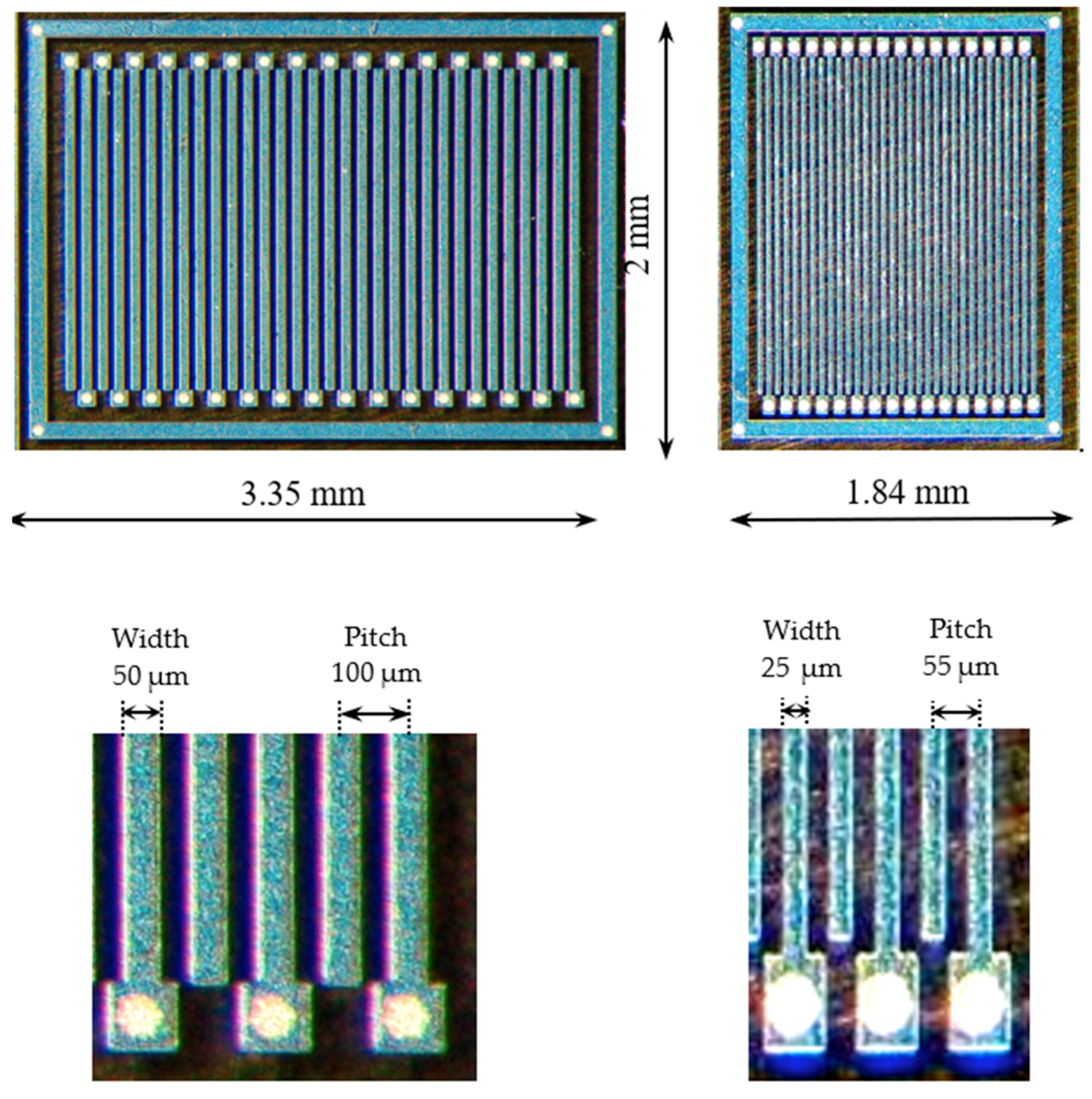
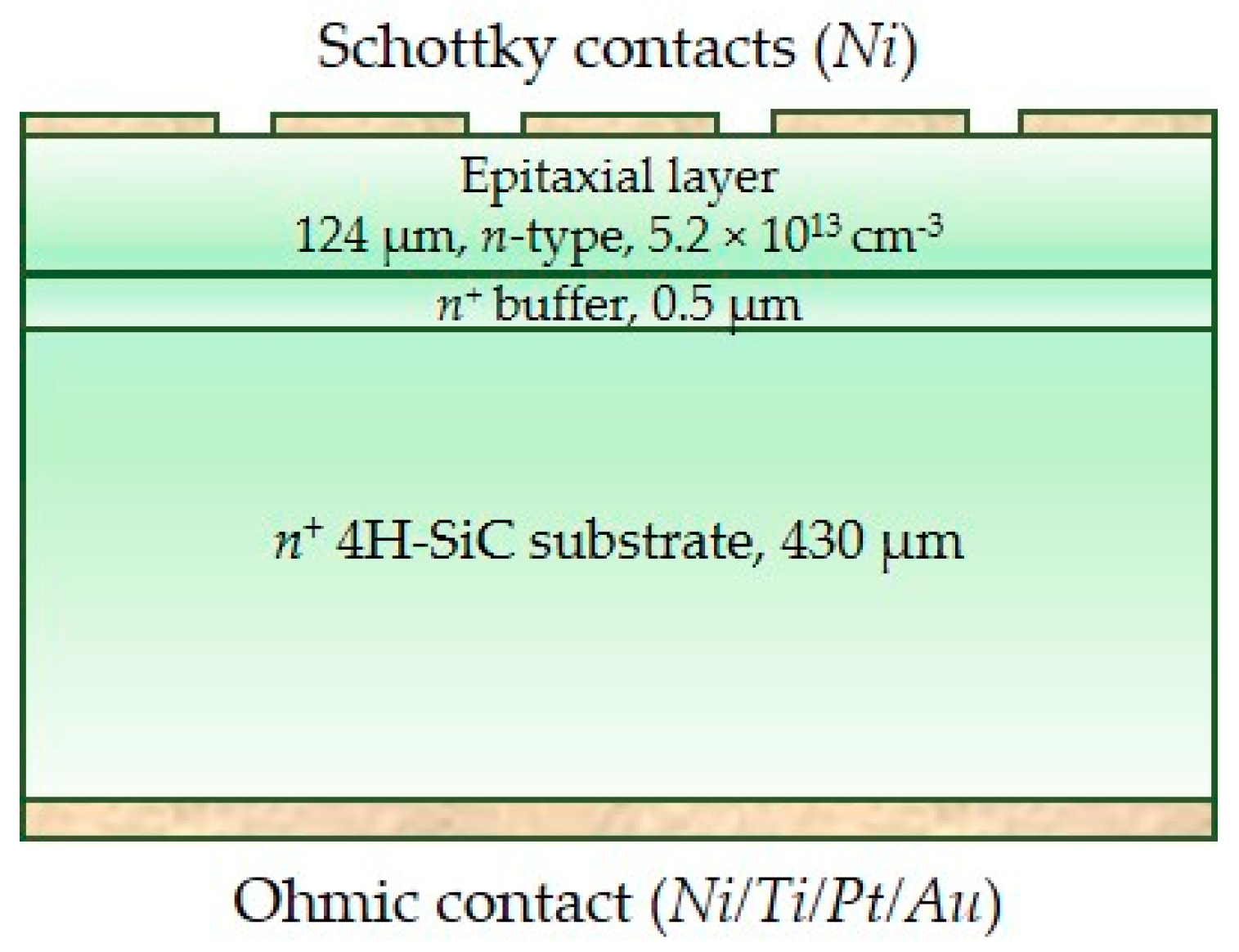
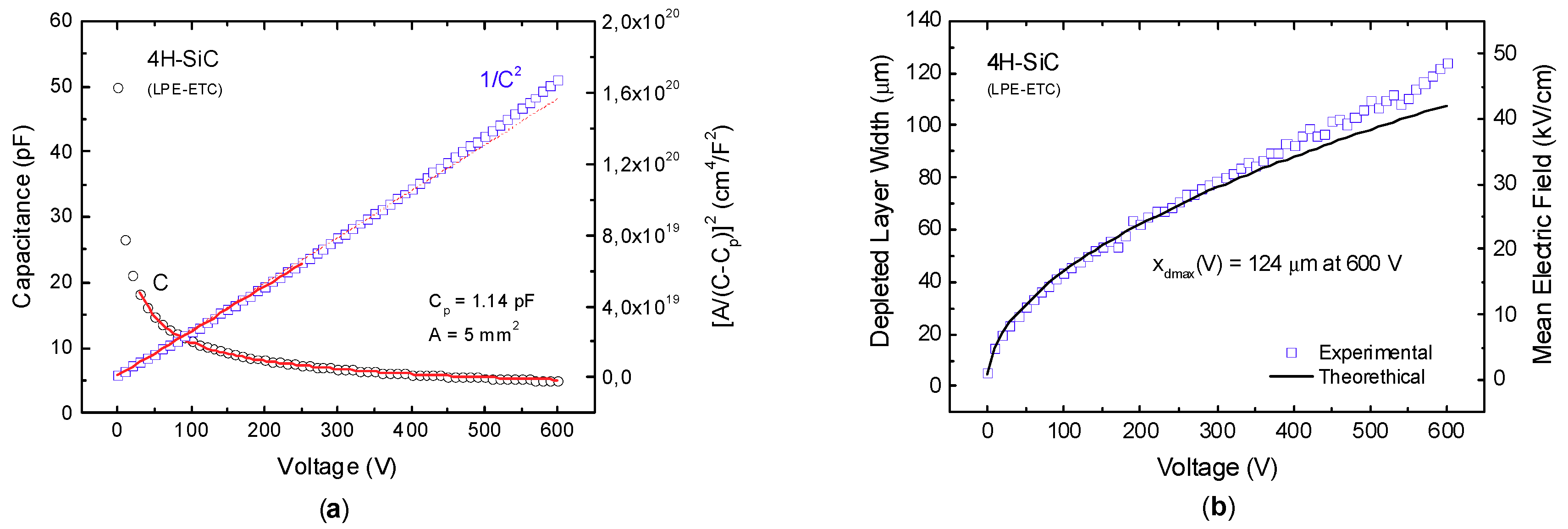
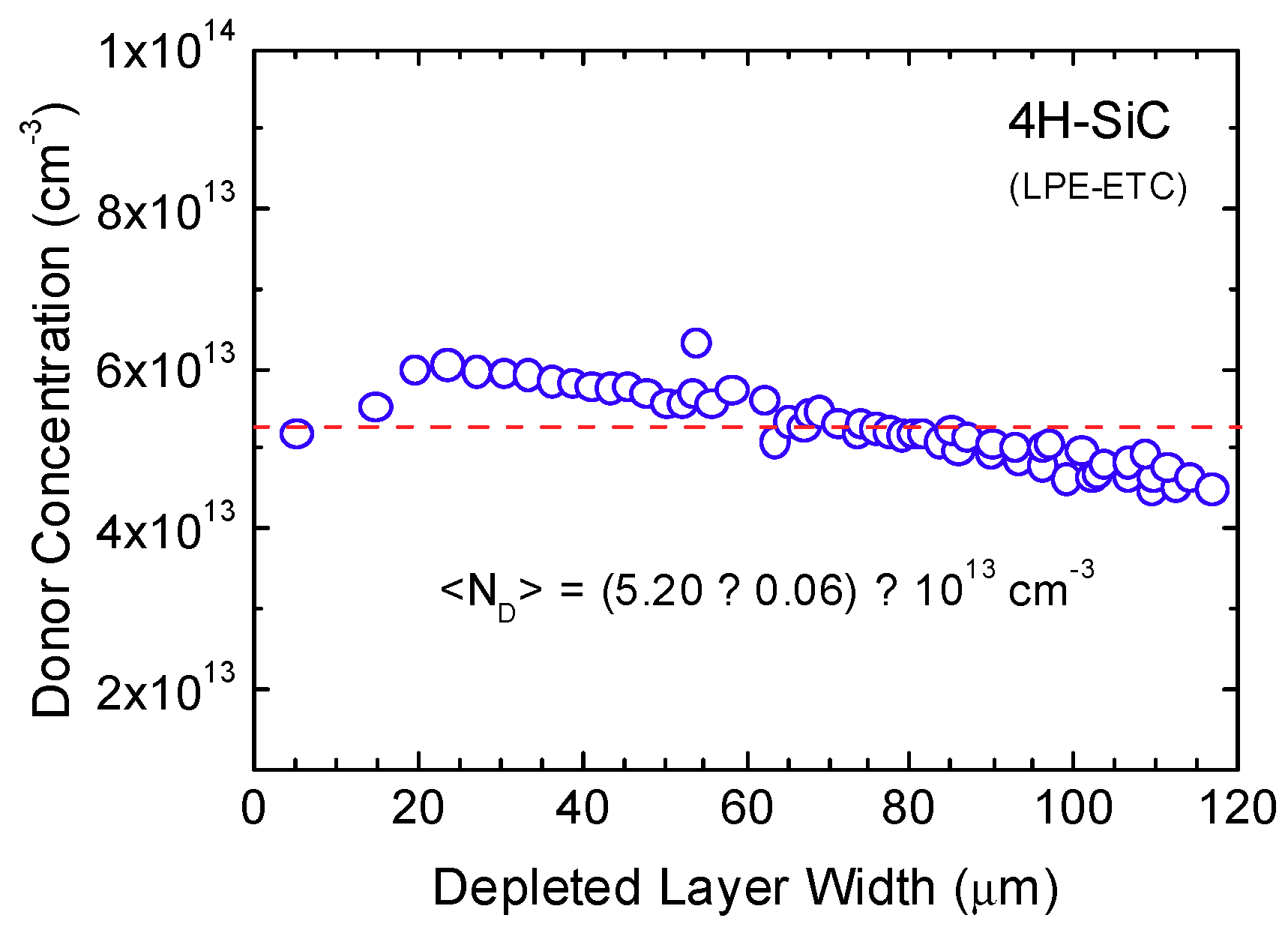
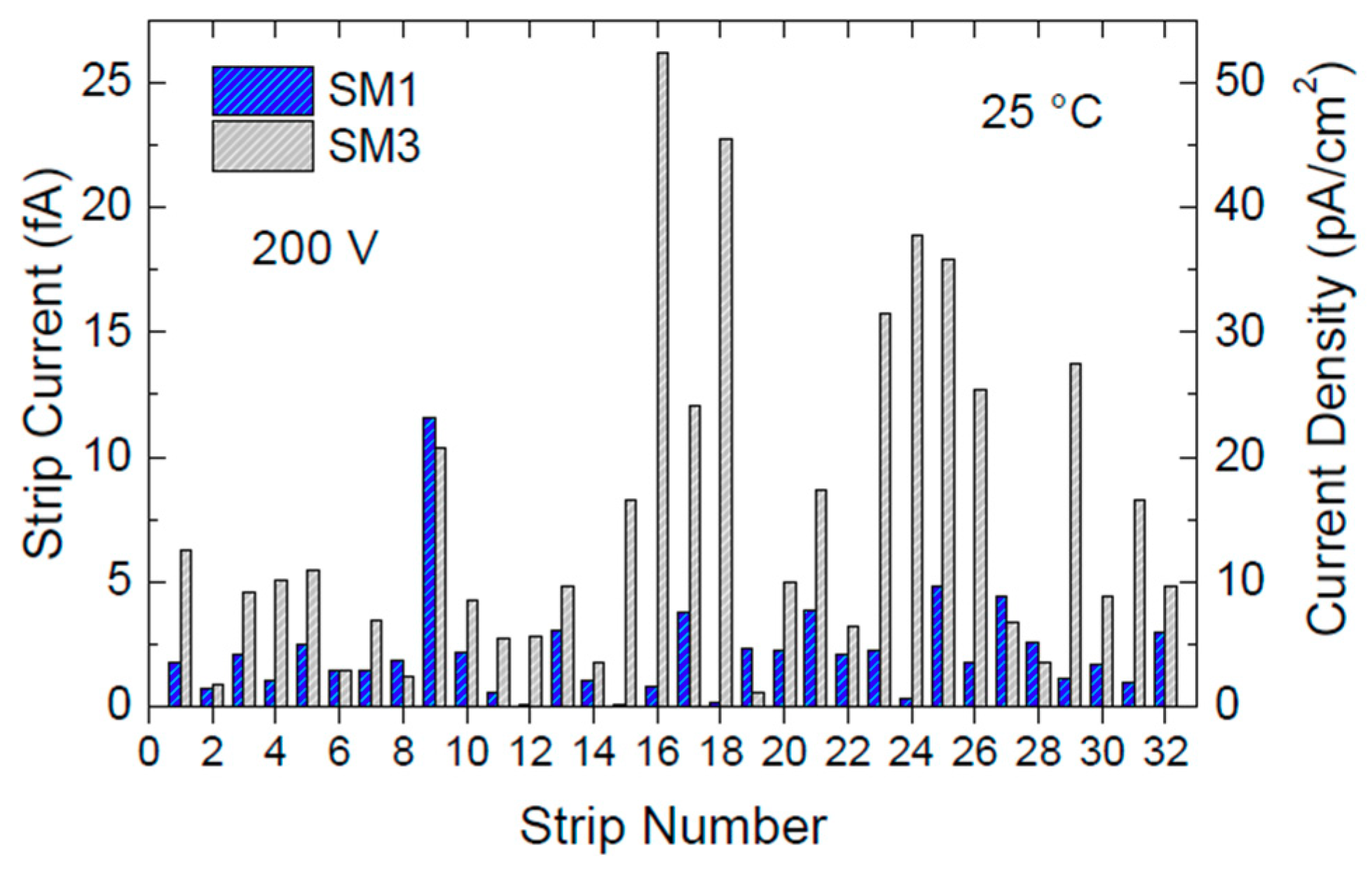
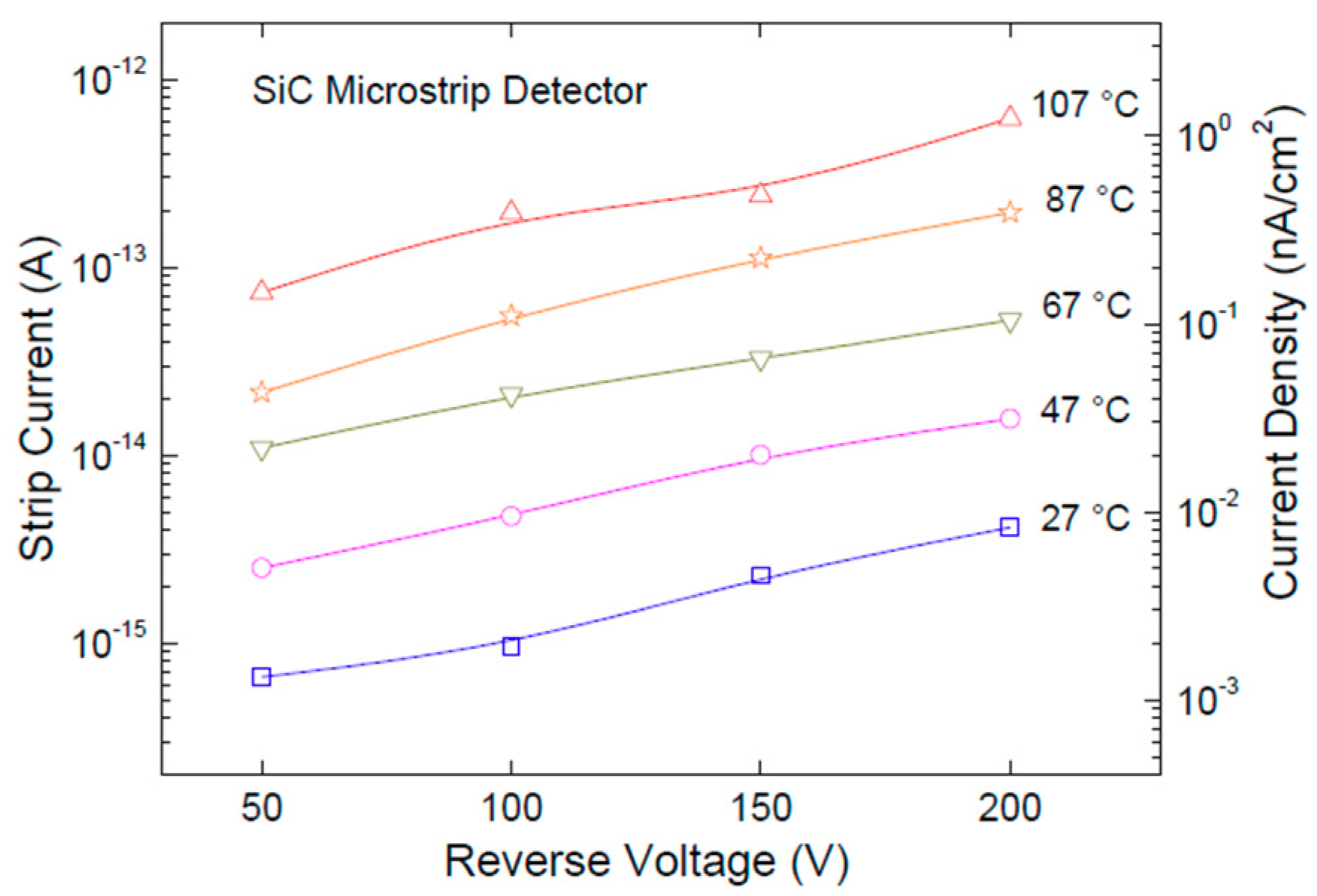
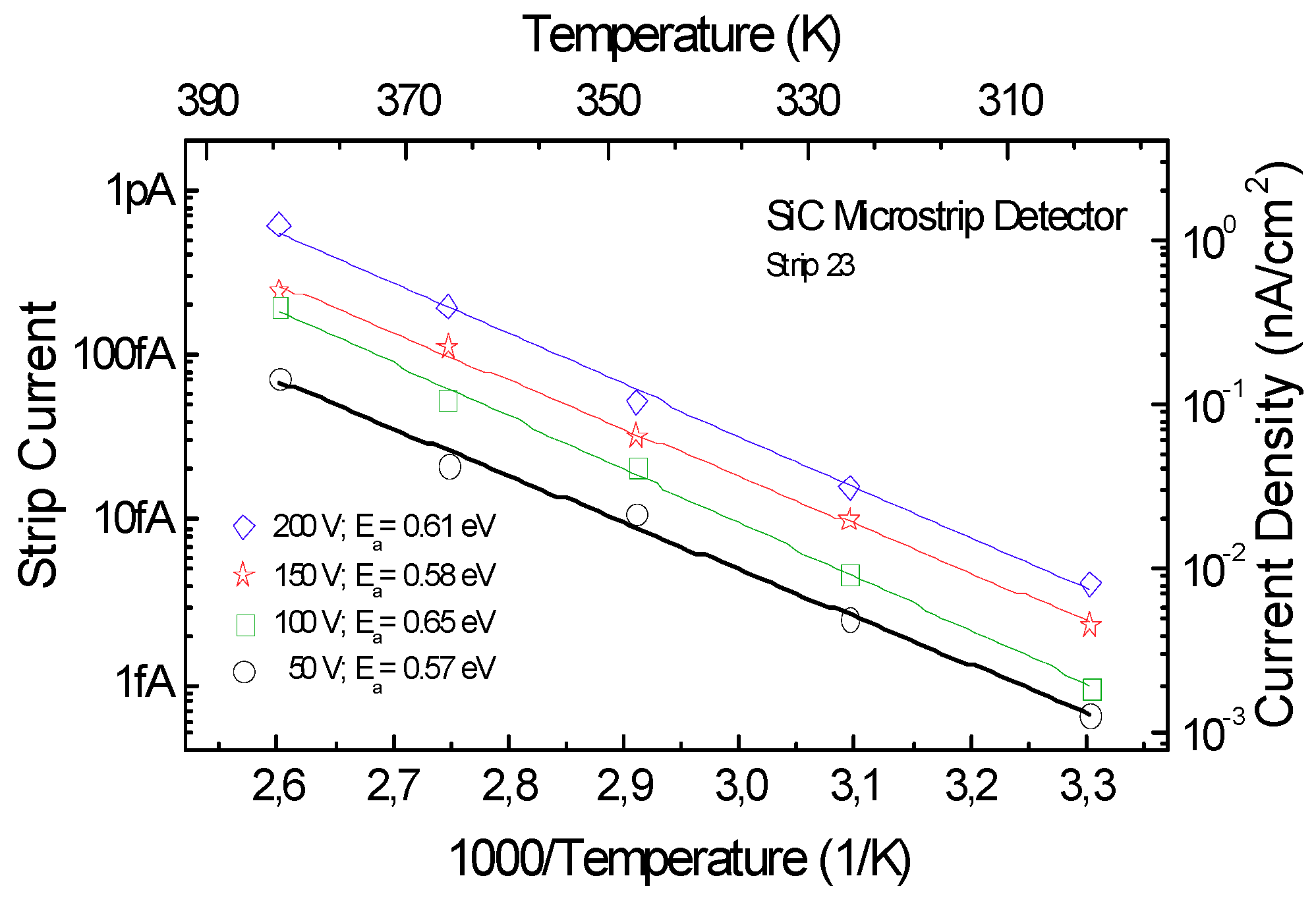
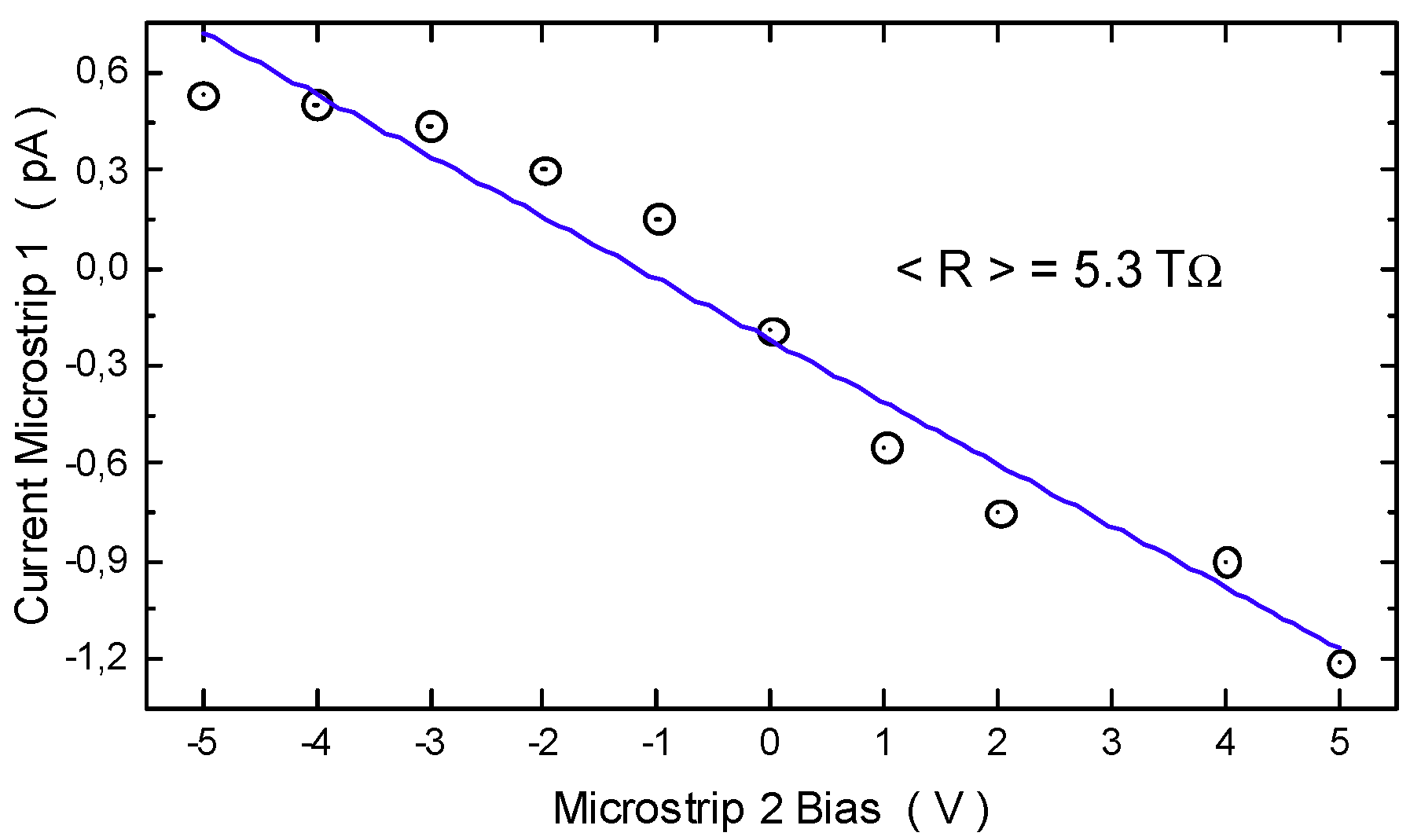
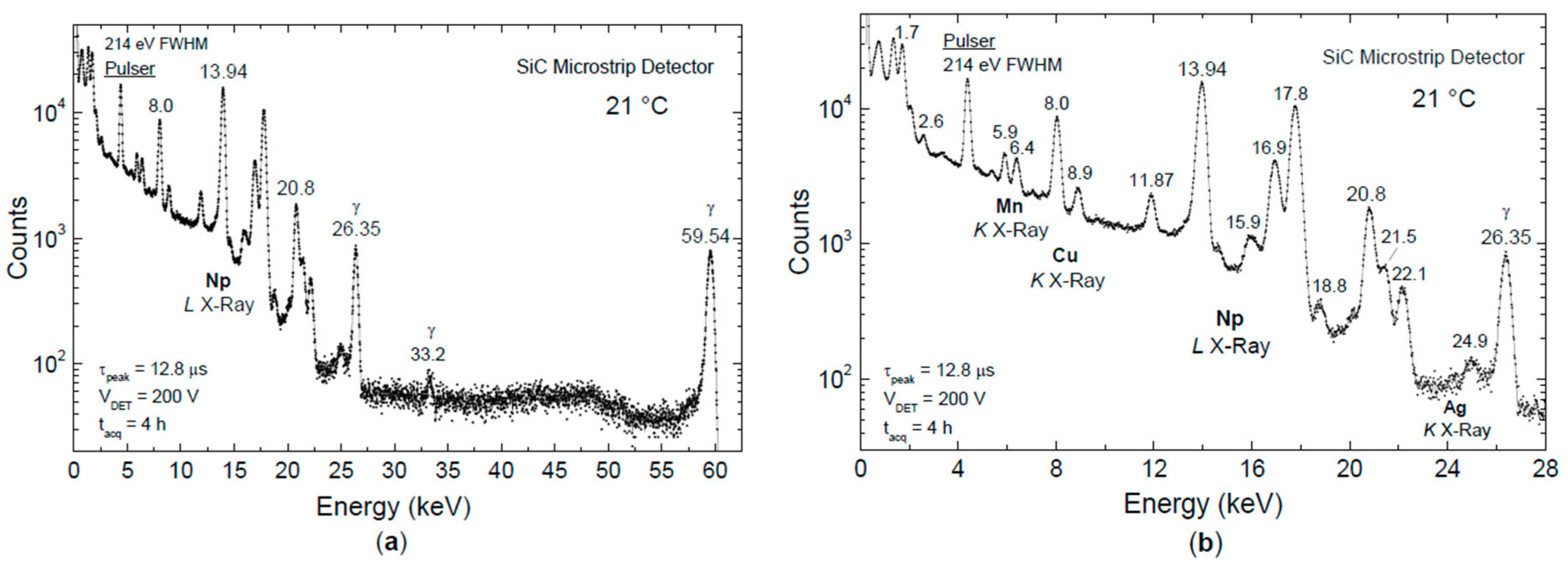
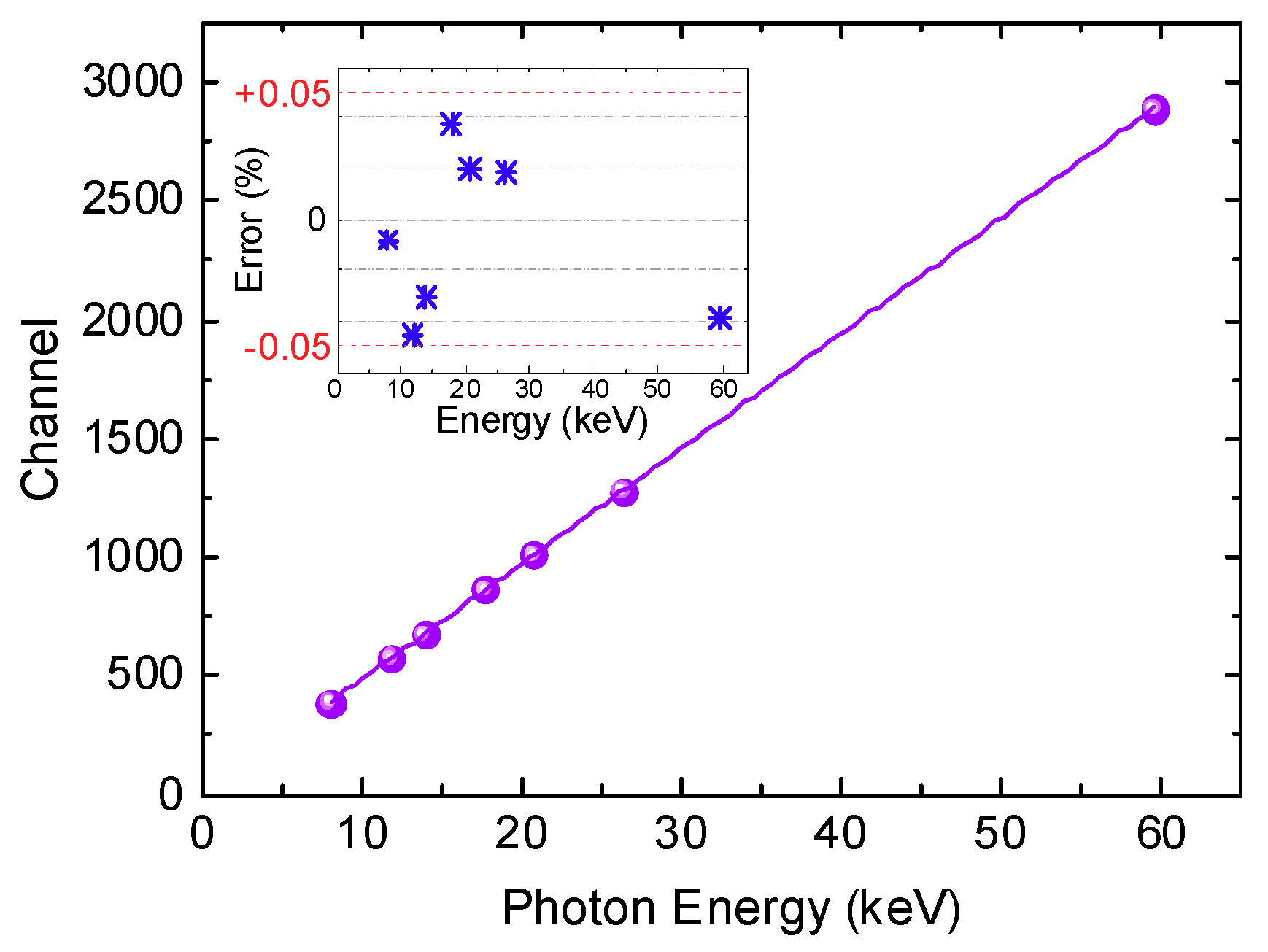
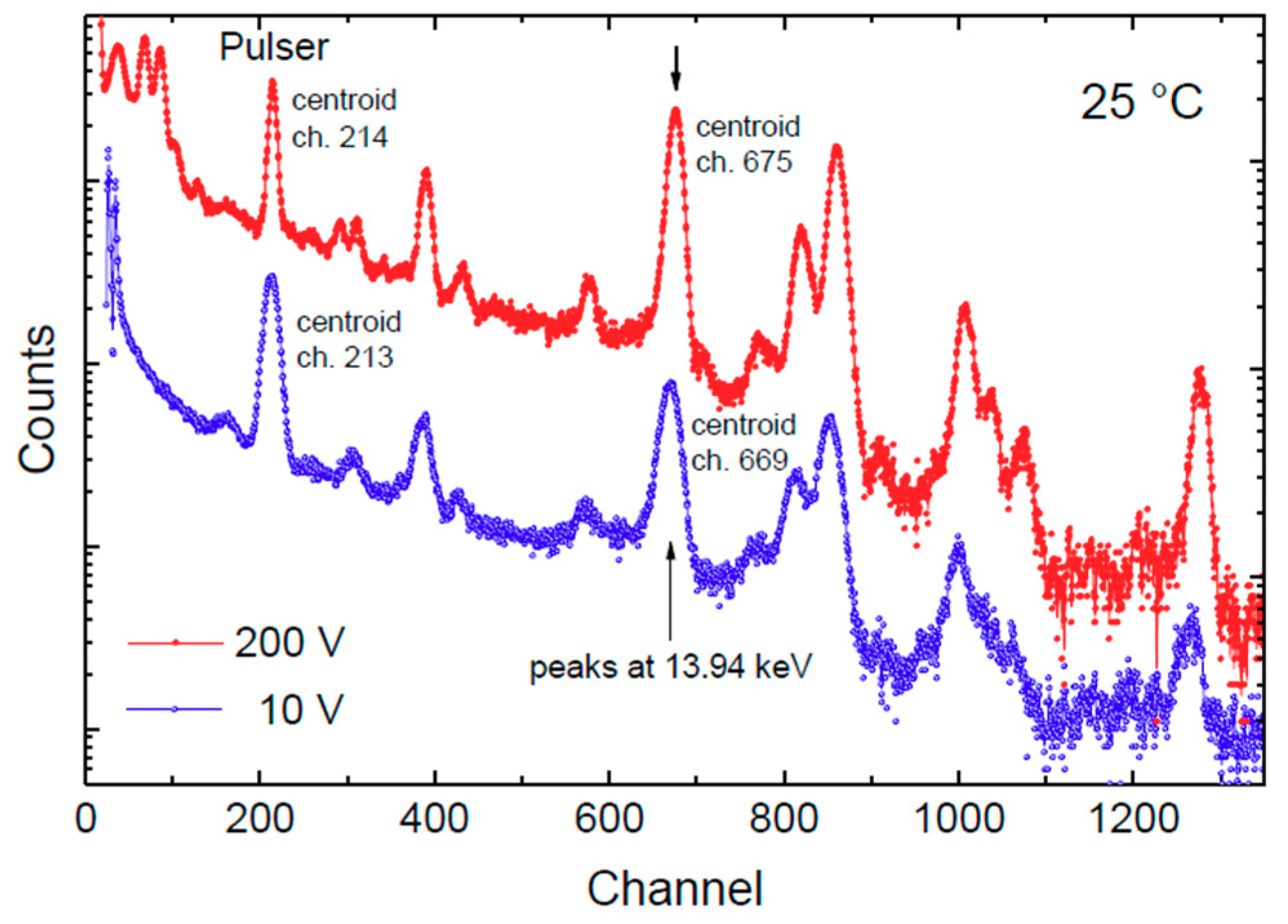
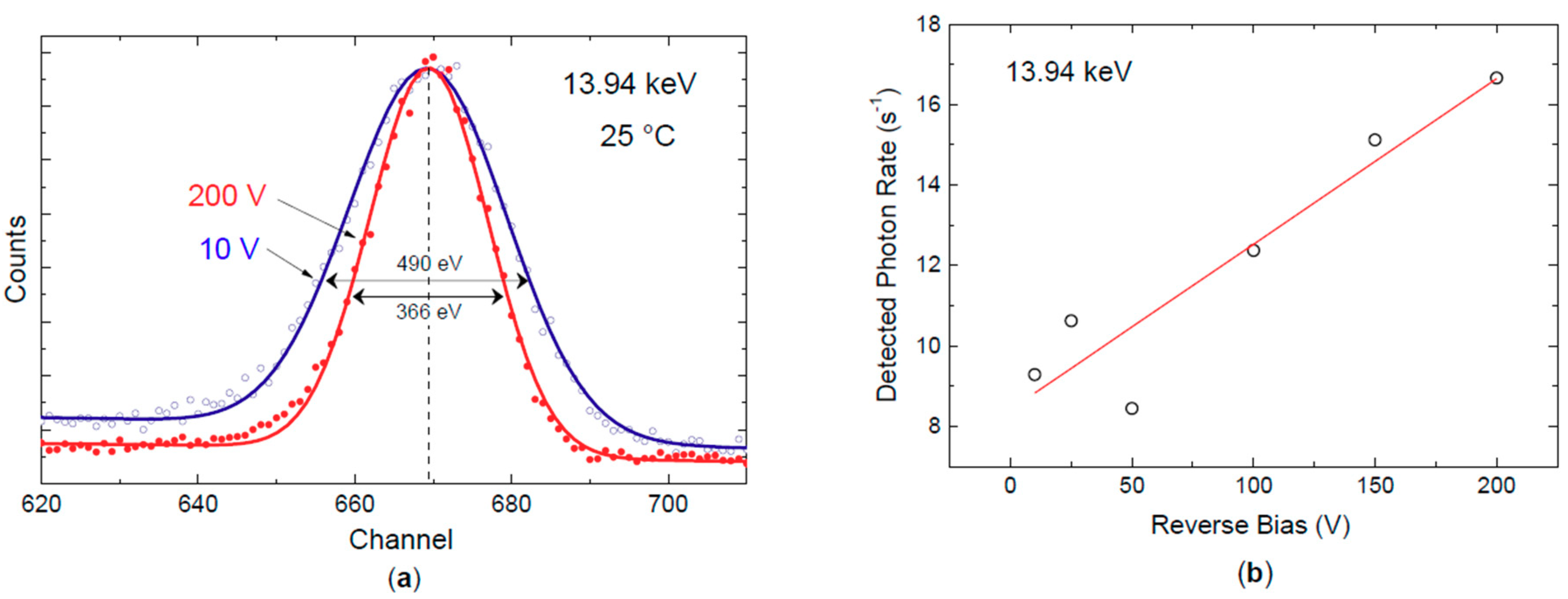
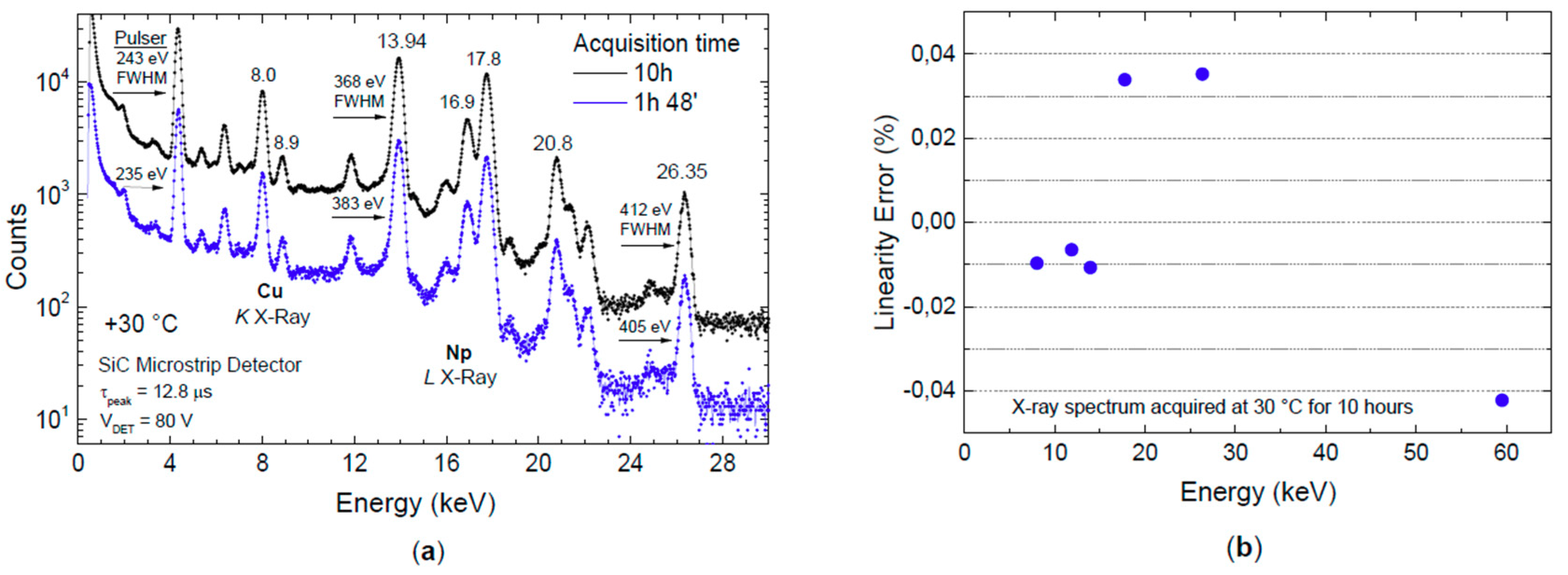
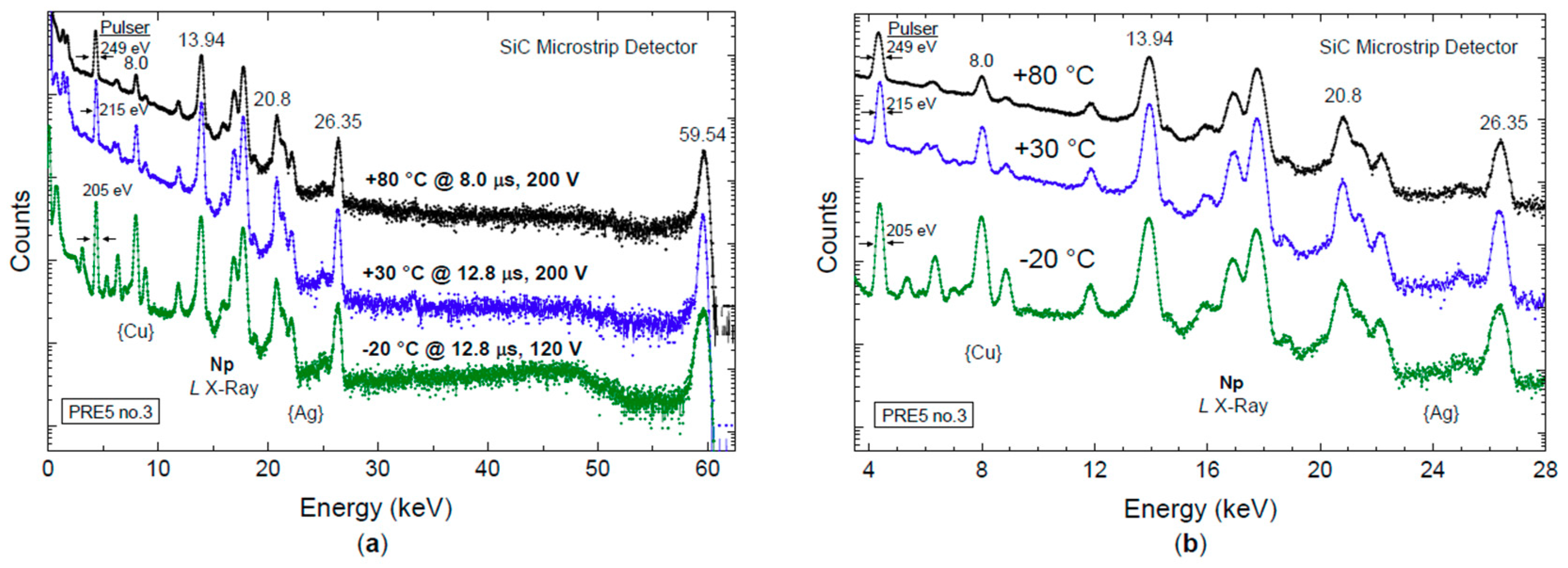
© 2019 by the authors. Licensee MDPI, Basel, Switzerland. This article is an open access article distributed under the terms and conditions of the Creative Commons Attribution (CC BY) license (http://creativecommons.org/licenses/by/4.0/).
Share and Cite
Puglisi, D.; Bertuccio, G. Silicon Carbide Microstrip Radiation Detectors. Micromachines 2019, 10, 835. https://doi.org/10.3390/mi10120835
Puglisi D, Bertuccio G. Silicon Carbide Microstrip Radiation Detectors. Micromachines. 2019; 10(12):835. https://doi.org/10.3390/mi10120835
Chicago/Turabian StylePuglisi, Donatella, and Giuseppe Bertuccio. 2019. "Silicon Carbide Microstrip Radiation Detectors" Micromachines 10, no. 12: 835. https://doi.org/10.3390/mi10120835
APA StylePuglisi, D., & Bertuccio, G. (2019). Silicon Carbide Microstrip Radiation Detectors. Micromachines, 10(12), 835. https://doi.org/10.3390/mi10120835





